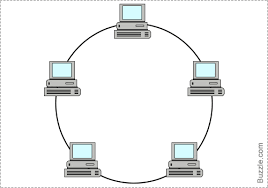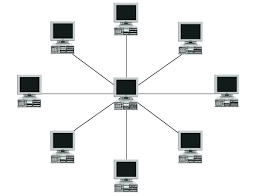
BASIC CONCEPT OF NETWORK
NETWORK ARCHITECHURE
NETWORK TOPOLOGY

|
||
BASIC CONCEPT OF NETWORK |
NETWORK ARCHITECHURE |
NETWORK TOPOLOGY |
| Types of network topology |
Bus Network |
Ring Network |
Star Network |
Diagram |
 |
 |
 |
| Definition |
A bus network consists of a single central cable to which all computers and other devices connect (node). |
A cable forms a closed loop (ring) with all computers and devices arranged along the ring. |
All the computers and other devices on the network connect to acentral device (hub/switch), thus forming a star. |
Advantages |
|
|
|
Disadvantages |
|
|
|